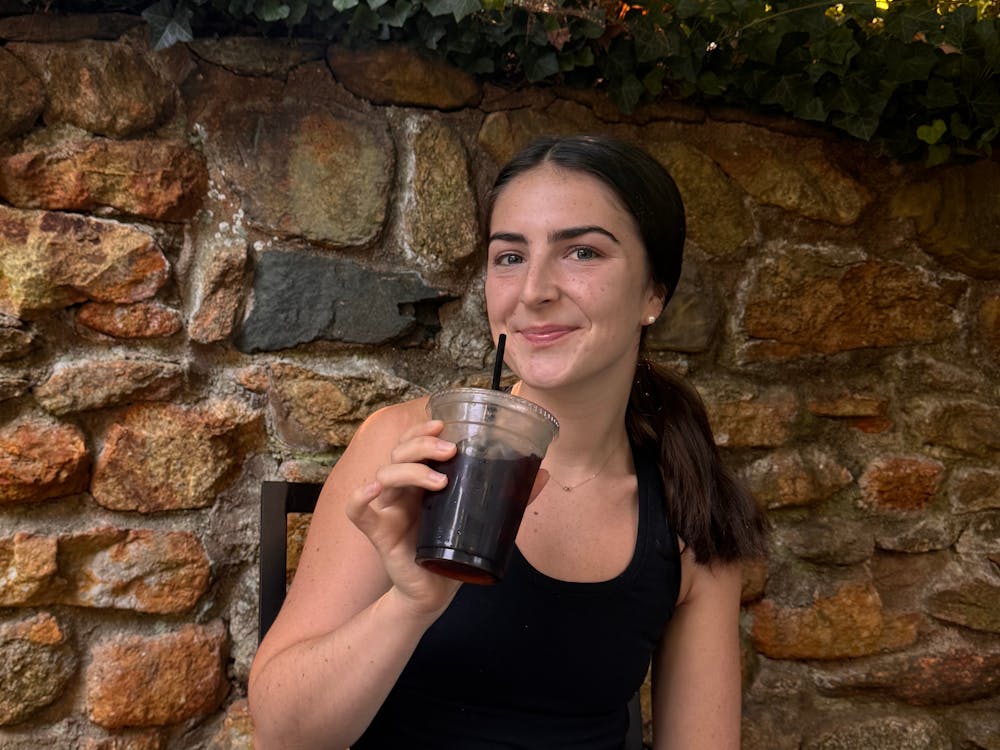"What? I didn't know we had that." This, more or less, is students' standard response when they hear about the University's Kluge-Ruhe Aboriginal Art Collection. Though many students at the University may be completely unaware of its existence, this collection boasts more than 1,600 pieces of art and is the only public museum in North America devoted solely to the exhibition of Australian Aboriginal artwork, according to Margo Smith, director and curator of the museum.
"Most of our visitors are typically tourists, or those who have already been to the museum and are returning to see a new exhibit," Smith said..
Smith, who received her master's and doctorate degrees in anthropology from the University, became curator of the collection in 1998. For three years, Smith also led a course through the anthropology department, "Exploring Indigenous Australia," which offered students an opportunity to spend four weeks traveling and studying in Australia under Smith's guidance.
The Kluge-Ruhe collection was given to the University as a gift from philanthropist John W. Kluge in 1997, who had been collecting Aboriginal artwork for the previous nine years. In 1993, Kluge purchased the late Edward L. Ruhe's collection of works, resulting in an impressive assortment of Aboriginal paintings and sculptures comparable with the large state-run museums and collections in Australia.
For those unfamiliar with the history and evolution of Aboriginal artwork, Smith wishes to dispel common misconceptions about it.
"Most people have this view of Aboriginal art as being primitive, but our pieces showcase contemporary, trained artists," Smith said.
Smith explained that the collection exhibits, for example, works by John Mawurndjul, a well-known Aboriginal artist in Australia, whose artwork demonstrates a commitment to fine detail and intricate pattern use, while also using materials such as canvases made of tree bark and natural paints made from minerals such as ochre and charcoal.
The basis of Aboriginal artwork revolves around the concept of 'the Dreaming,' Smith said. Museum literature states the Dreaming is "a relationship with the spiritual that existed when the world was created, exists now and will exist in the future. It is one of the most fundamental and enduring expressions of Aboriginal culture."
In a culture so diverse as to contain 250 spoken languages, the Dreaming is an integral pan-Aboriginal theme displayed in all forms of Aboriginal artwork "through song, dance, body paint, rock art, sand sculpture and bark painting, and more recently, through acrylic paint on canvas."
Because the Kluge-Ruhe collection is so vast in both number and variety, the museum changes its exhibited works three times a year. Items not on display are kept in the basement under temperature-controlled conditions.
In addition to the primary collection, the museum offers a variety of other events, lectures and exhibitions throughout the year.
From early September until Oct. 13, the museum featured an exhibit titled "What I did this summer: A visual essay." This exhibit featured new artwork Smith acquired on a two-week trip to Australia this past summer, where she and seven other Americans traveled a total of 4,000 miles on the continent and visited 24 Aboriginal art centers..
The museum is currently featuring an exhibit by Fiona Foley titled "No Shades of White." Smith said she believes this exhibit will be particularly fascinating to students at the University. Foley's work and experience demonstrate the strides made in contemporary Aboriginal artwork. Originally from Badtjala in Fraser Island, Queensland, Foley studied art in London and New York and has exhibited her work on six continents.
"No Shades of White" is a provocative exhibition aimed at turning the tables on racial conceptions, according to Smith. During the time Foley spent in New York, she became aware of a secret society, the Hedonistic Honky Haters, whose formation was a response to the KKK. Foley's art centers around figures in Klan-like hoods and robes, except these ensembles are made of ethnic textiles and black leather. Smith noted that Foley encourages her photographic models to step inside the minds of Klan members in order to emanate anger and hatred in a disquietingly real portrayal.
The Kluge-Ruhe collection will coordinate with the Virginia Film Festival this November to feature the films "Crocodile Dreaming" and "Yellow Fella" and also is planning to host several lectures throughout this year. Free guided-tours are offered at 10:30 a.m. Saturdays.
The museum is open Tuesday through Saturday from 9 a.m. to 3 p.m. It is located at 400 Worrell Drive. There is no admission fee.






